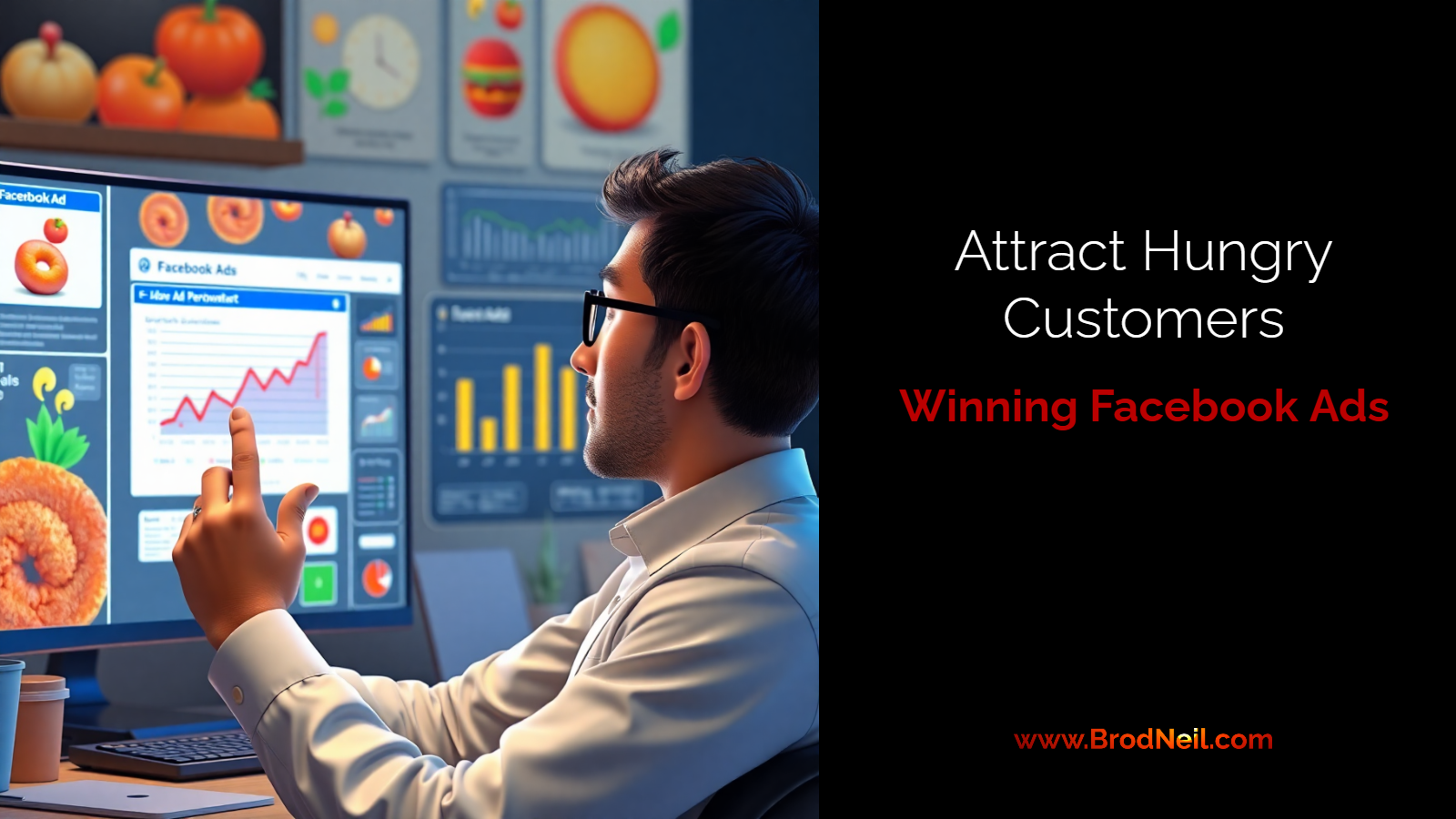Attract Hungry Customers and Boost Your Bottom Line with Targeted Ads
Table of Contents
Turn Clicks into Customers
- Facebook Ads are a powerful, cost-effective solution for restaurants, cafes, caterers, food trucks, etc.
- This guide provides a practical, step-by-step roadmap designed specifically for food businesses to create campaigns that drive tangible results (orders, bookings, awareness).
Step 1: Define Your Delicious Objectives & Measure Success
- Food Business Specific Goals (Examples):
- Increase online orders via website/app by X%.
- Drive reservations for specific days/times.
- Promote a new menu item, seasonal special, or LTO.
- Increase foot traffic for a physical location.
- Build brand awareness within a specific local radius.
- Generate leads for catering services or event bookings.
- Grow your email list for loyalty programs/newsletters.
- Key Performance Indicators (KPIs) for Food Biz:
- Reach & Impressions
- Click-Through Rate (CTR)
- Cost Per Click (CPC)
- Landing Page Views
- Conversion Rate (% of actions like orders, bookings)
- Cost Per Conversion/Acquisition (CPA)
- Return on Ad Spend (ROAS)
- (Offline): Promo code usage, “How did you hear about us?”
Step 2: Pinpoint Your Ideal Foodie Audience
- Crafting Your Foodie Persona(s):
- Demographics: Age, location (define delivery/service radius precisely), language.
- Interests: Specific cuisines, food blogs, cooking interests, dining out frequency, competitor pages liked.
- Behaviors: Frequent online buyers, use food delivery apps, recently moved, upcoming birthdays/anniversaries.
- Pain Points: Seeking quick meals? Healthy options? Planning special occasions?
- Facebook’s Targeting Tools:
- Core Audiences: Use demographics, interests, behaviors, detailed location targeting (radius, postcode).
- Custom Audiences: Retarget website visitors, page engagers, or upload customer email lists.
- Lookalike Audiences: Find new people similar to your best existing customers.
Step 3: Create Mouth-Watering Ad Creative & Compelling Copy
- Visuals:
- Copywriting:
- Headline: Grab attention, highlight benefit/offer (e.g., “Craving Pizza? Order Now!”).
- Primary Text: Clear, concise, benefit-driven. Use sensory words. Mention key selling points (e.g., “Authentic Neapolitan,” “Farm-to-Table,” “Fast Delivery”). Use emojis sparingly 🍕.
- Strong Call-to-Action (CTA) Button: Match the desired action.
- Examples: “Order Now,” “Book Now,” “Get Offer,” “View Menu,” “Learn More,” “Get Directions,” “Sign Up.”
- A/B Testing: Test different images/videos, headlines, copy, and CTAs.
Step 4: Select the Best Ad Format & Placement for Your Goal
- Common Ad Formats:
- Single Image
- Single Video
- Carousel (showcase multiple items/steps)
- Collection (immersive, links to menu items)
- Slideshow (easy video from images)
- Placements:
Step 5: Determine Your Budget & Bidding Strategy
- Budget:
- Daily vs. Lifetime: Daily for control, Lifetime for even spend. Start small ($5-$10/day per ad set), then scale.
- Bidding Strategies:
- Lowest Cost: Gets the most results for your budget (good starting point).
- Cost Cap/Bid Cap: Set max cost per result (more control).
- ROAS Goal: Set minimum return target (for conversion campaigns).
- Campaign Budget Optimization (CBO): Set one campaign budget distributed automatically across ad sets.
Step 6: Setting Up Your Campaign in Ads Manager (Brief Overview)
- Choose Objective: Align with Step 1 (e.g., Sales, Traffic, Awareness).
- Configure Ad Set: Define Audience (Step 2), Placements (Step 4), Budget/Schedule (Step 5).
- Create Ad: Upload Creative, write Copy, choose CTA (Step 3), add website URL.
- Install Facebook Pixel: Crucial for tracking conversions (orders, bookings) and enabling retargeting on your website/ordering platform.
Step 7: Launch, Monitor & Optimize for Peak Performance
- Monitor Key Metrics Regularly: Check performance based on KPIs from Step 1.
- Identify Winners & Losers: Analyze ads, audiences, placements.
- Optimization Actions:
- Pause underperformers, shift budget to winners.
- Refine targeting based on conversion data.
- Tweak creative if performance drops (ad fatigue).
- Adjust bids/budgets.
- Always be A/B testing new elements.
Conclusion: Start Attracting More Customers Today!
- Recap the key steps: Goals, Audience, Creative, Format, Budget, Setup, Optimize.
- Effective Facebook advertising is achievable for food businesses with a strategic approach.
- Take the first step using this guide.
- (Optional – Your Business’s CTA): e.g., “Download our companion checklist,” “Book a free strategy call.”
Bonus Section: Pro Tips for Food Businesses
- Use the Local Awareness Objective.
- Run Contests & Giveaways.
- Promote Timely Offers (Happy Hour, lunch specials, holidays).
- Ensure seamless integration with Online Ordering platforms.
- Use Messenger Ads for direct booking/Q&A.
- Highlight positive Reviews & Social Proof in ads.

